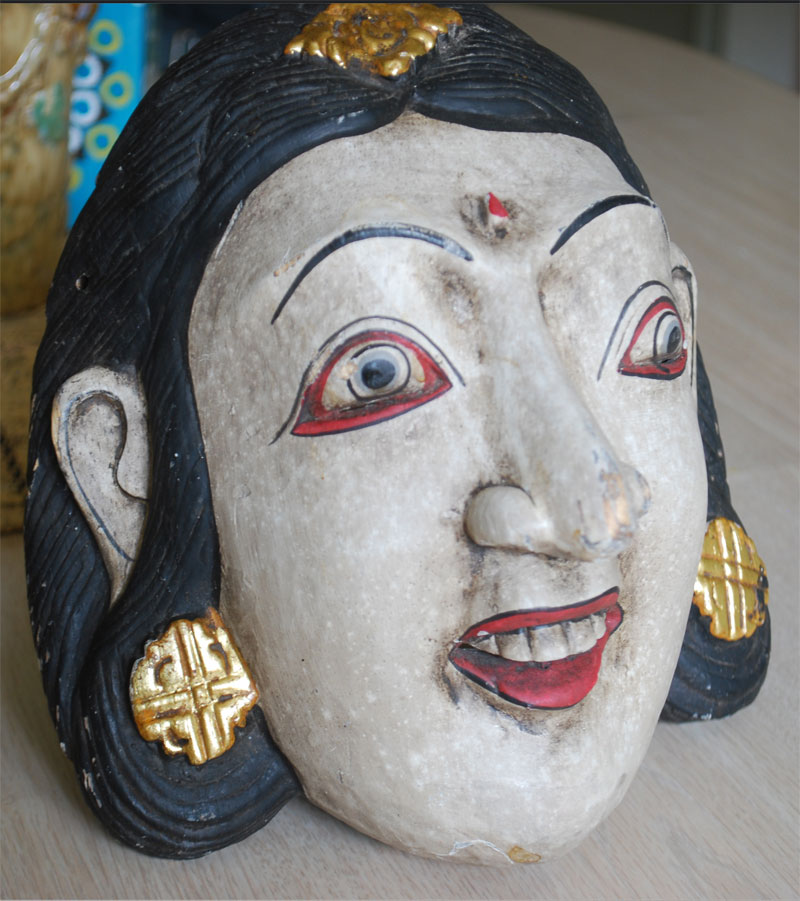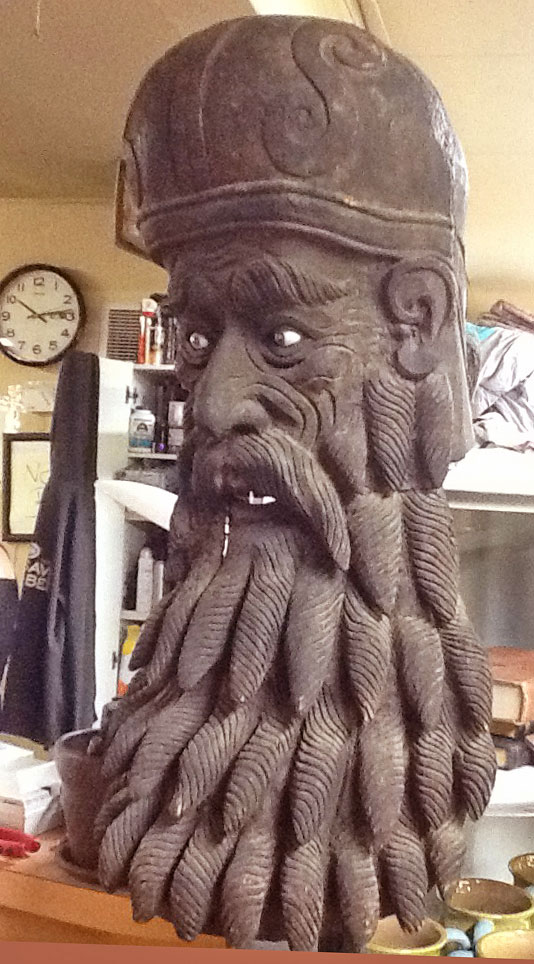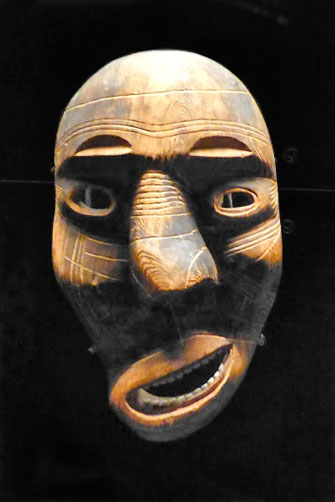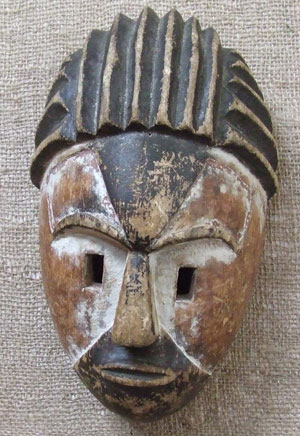 Q: My wife and I own this mask that we believe comes from the Indian Ocean part of the world. It is made from a light weight wood, has some damage, but looks good on our shelf. Frederick, 1445
Q: My wife and I own this mask that we believe comes from the Indian Ocean part of the world. It is made from a light weight wood, has some damage, but looks good on our shelf. Frederick, 1445
A: You are right about location. This is a reproduction of a Kolam mask from Sri Lanka, the largest island in the Indian Ocean.The Kolam drama has existed from 15th century, but some Sri Lanka legends said that this genre of drama has a history spanning more than 2500 years. Regarding the definition of the term Kolam, most reseachers have argued that the word has its origins in South India. The word Kolam is derivatives from a Tamil word of wide significance meaning “representation” or “a figure very much out of the ordinary.”
This Sri Lankan mask does not represent a specific individual but instead depicts a character from a masked performance, one of many personas in the ceremonial folk drama called Kolam. Many centuries old and still performed today, Kolam has three main types of characters; the supernatural, the human, and the animal. For the viewing audience, human masks often portray recognizable characters from Sri Lankan society, such as the king and queen, the soldier, the traveling merchant, the moneylender, or the villager. This mask would transform its wearer into a queen or other female character. Carved from blocks of wood, Kolam masks are brightly painted with unique patterns of colors based on sex, age, and position in society.
In addition to these types of Kolam masks, there is another group that are used by village shaman to treat various birth birth defects and diseases. These kinds look grotesque. And then there are the Gurulus and other extravagances. There are many collectors who specialize in only Sri Lankan masks.






